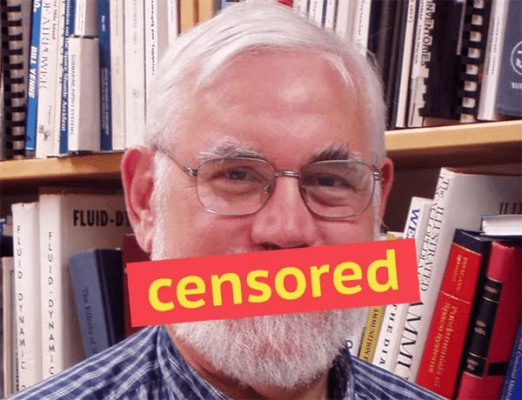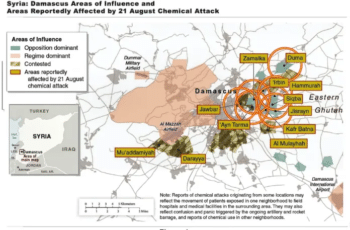Top MIT Scientist was subject to defamatory attacks and had article exposing truth about alleged Syrian chemical weapons attacks pulled by prestigious scientific journal.
Fearful editors and CIA-connected hacks ganged up to defame top MIT scientist who refused to echo government propaganda. Instead, he quit his 30-year job on principle.
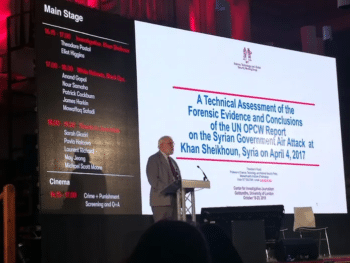
Theodore Postol lectures an audience in London on his findings that contradict the UN’s Organization for the Prohibition of Chemical Weapons (OPCW) report on chemical-weapon use in Syria. (Photo: rt.com)
Theodore Postol is one of the world’s leading authorities on warfare and weaponry. A physicist with a Ph.D. in nuclear engineering, he is Professor Emeritus of Science, Technology, and International Security at the Massachusetts Institute of Technology (MIT) and a former top policy adviser to the chief of naval operations.
During a career full of honors, he received the Leo Szilard Prize from the American Physical Society for “incisive technical analysis of national security issues vital for informing the public policy debate”; the Hilliard Roderick Prize from the American Association for the Advancement of Science; the Norbert Wiener Award from Computer Professionals for Social Responsibility for “uncovering numerous and important false claims about missile defenses”; and the Richard L. Garwin Award from the Federation of American Scientists “that recognizes an individual who, through exceptional achievement in science and technology, has made an outstanding contribution toward the benefit of mankind.”
Professor Postol was also a senior editorial board member of the Princeton-based Science & Global Security journal for more than 30 years—until he quit in protest over the journal’s refusal to publish an article he wrote that embarrassed the CIA and the U.S. government.
The article provided incontrovertible evidence that the murderous April 4, 2017, sarin gas attack on Syrian civilians was not the work of the Assad government but a false-flag operation by U.S.-funded jihadists designed to make it look like Assad was to blame.
As the professor said in his letter of resignation:

To keep Postol’s article from being published, a campaign of character assassination was mounted against Professor Postol to destroy his credibility and smear his reputation. Pressure to refuse the article was exerted on the journal’s editors (many of whom Postol had mentored) by select members of the scientific and academic community—who had long suckled at the government teat, and therefore obediently ganged up on their former colleague with defamatory articles and scandalous letters circulated secretly behind his back.
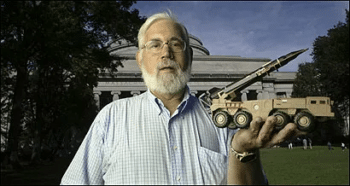
Postol featured in The Boston Globe with a replica of a Patriot missile. (Photo: archive.boston.com)
Bizarrely, in one of these cowardly letters, Gregory D. Koblentz, a Fellow of the Council on Foreign Relations (CFR), even compared Postol to a Holocaust denier.
But Professor Postol was no stranger to controversy, or to confronting and exposing U.S. government lies about its military “triumphs” and “successes.”
Following the 1991 First Persian Gulf War, Postol published an article in Science & Global Security debunking U.S. government claims about the efficacy of the Patriot missile defense system, which had reputedly shot down Scud missiles launched by Iraq over Israel.
The article prompted a congressional investigation and Postol became a minor scientific celebrity with a strong reputation for integrity.
Nearly 30 years later, Postol is still doing what he does best: debunking governmental narratives through cutting-edge scientific research and analysis.
However, the political landscape in America has changed—dramatically for the worse.
Not only can Postol no longer get his research published in leading scientific journals; he is now also forced to endure slanderous personal attacks in which he is labeled as a mental basket case, conspiracy theorist and crank.
In an interview with CAM, Postol said,
I could not do the stuff with the Patriot missiles I did today. Nobody has the courage to publish things anymore that go against conventional wisdom on certain key topics related to national security.
Postol added that,
universities and university journals are no longer a source of truth… There is a lack of independence of thought and ability to referee exposés of this nature carefully and a betrayal of the fundamental moral obligation of scientists and academics to society to investigate and then present the truth on important matters—even when it makes people in positions of power uncomfortable.
Report on Chemical Weapons Use in Khan Shaykhun, Syria
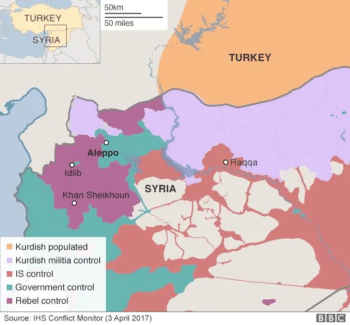
(Source: bbc.com)
Postol made people in positions of power uncomfortable through his dissection of the official government narrative on chemical weapons attacks in Syria.
An article that he wrote with Goong Chen, a mathematician from Texas A&M University, and five other scientists, “ Computational Forensics for the Alleged Syrian Sarin Chemical Attack on April 4, 2017: What Actually Happened?” used forensic computer simulations and three-dimensional image analysis to model the crater that was identified as the source of sarin allegedly released at Khan Shaykhun, an al-Nusra front controlled town in the Idlib province.
The alleged attack served as a pretext for the Trump administration to launch 59 cruise missiles against the Syrian government’s airbase at Shayrat.
Postol and his co-authors determined that the crater and related fragments were almost certainly caused by a vehicle-launched improvised rocket-propelled artillery round with a high-explosive warhead—which the rebels could have possessed—and not an aerial bomb from a Syrian airplane.
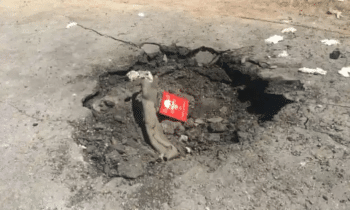
Site of the alleged chemical weapons attack. (Photo: theguardian.com)
No fragments characteristic of an aerial bomb such as tail fins were observed and the size of the crater was too small to be caused by a bomb.
This finding—which was confirmed by a senior intelligence official with experience assessing bomb damage—called into question the scenario of attack described by the U.S. intelligence community, and the UN’s Organization for the Prohibition of Chemical Weapons (OPCW) Joint Investigative Mechanism (JIM).
According to Postol’s team, there was extensive tampering with the crater and debris, which led to misreporting in the media.
A dead goat was found at the scene displaying symptoms of sarin inhalation; however, tracks were found indicating that the goat had been dragged to the scene along with a rope around its neck. Dead birds were also found that appeared to have been very recently released from a cage.
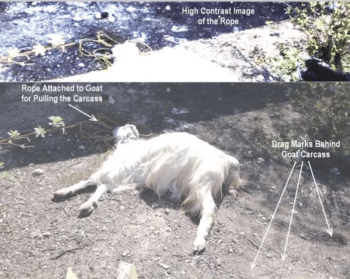
(Photo: “Forensic Evidence Cited by the OPCW That Contradict Its Reported Analysis and Conclusions,” provided to the author by Theodore Postol)
Postol and his team determined that there was no physical evidence of any sarin-containing vessel at the scene.
A pipe was inaccurately identified by the OPCW as a container filled with sarin; in truth it was the casing of the rocket motor that propelled the warhead to the location of the explosion.
Chemical weapons generally do not make large craters in the ground and since no workers sent to clean up the scene were exposed to sarin or died—when any contact with the asphalt around the crater would have been highly lethal in the wake of an attack1—it is unlikely sarin was actually used.
According to journalist Seymour Hersh, the impression that sarin had been used was created by a toxic cloud that resulted from the bombing of an agricultural supply depot near the crater possessing fertilizers, disinfectants and other goods whose release caused neurotoxic effects similar to those of sarin.
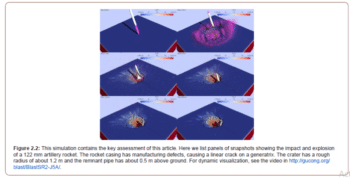
(Source: irishpublishers.com)
The Truth Is Suppressed
Postol, Chen et al.’s article “Computational Forensics for the Alleged Syrian Sarin Chemical Attack on April 4, 2017: What Actually Happened?” was published in the Global Journal of Forensic Science and Medicine in November 2020, and was featured by Tulsi Gabbard on her website when she was running for president.
However, the article was withdrawn from publication by the more prestigious journal Science & Global Security one year earlier after the article had initially been accepted and was circulated at the page proof stage.
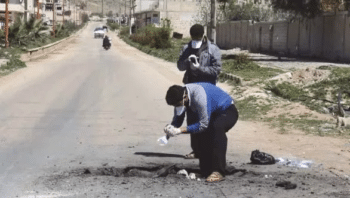
Two men collecting samples from scene of alleged chemical attack with almost no protection. (Photo: “Forensic Evidence Cited by the OPCW That Contradict Its Reported Analysis and Conclusions,” provided to the author by Theodore Postol)
Postol had served for more than 30 years on the editorial board of Science & Global Security and mentored the three main editors who ultimately blocked publication of his piece.
These editors were a) Pavel Podvig, an affiliate at the Center for International Security and Cooperation at Stanford University; b) Zia Mian, a senior research fellow and Co-Director of Princeton’s Program in Science and Global Security; and c) Alex Glaser, an associate professor in the School of Public and International Affairs at Princeton and in the Department of Mechanical and Aerospace Engineering.
In a letter to Goong Chen obtained by CAM dated December 27, 2019, Podvig, Mian and Glaser said that they had decided to withdraw publication of his and Postol’s article because of their “identification of a number of concerns with the editorial process,” including “concerns about the competence of the reviews and editorial judgments being used as a substitute for a decision by the reviewers to determine if their concerns had been reasonably addressed.”
The editors went on to state that they “accepted responsibility for mishandling the process in this case,” noting that their “discovery of inadvertent mistakes [in the review process] should have come earlier…. Given these editorial mistakes, our decision was to return the manuscript to the authors without prejudice. At no point have we suggested that the manuscript has been rejected or retracted.”2
This explanation is hollow because if the editors—who admitted to poor judgment—screwed up the review process, they were obliged to find a fair-minded reviewer.
The insinuation that the article was never rejected is also false because it was returned to the authors and never published.
Crank Reviewer and Bellingcat Disinformation
According to Postol, the main peer reviewer selected by Science & Global Security’s editors was a “crank” and “clown.” He was either a member of Bellingcat or closely associated with the organization.
Dubbed “an intelligence agency for the people,” Bellingcat puts out reports that advance U.S. and UK government disinformation about countries targeted for regime change like Russia and Syria.
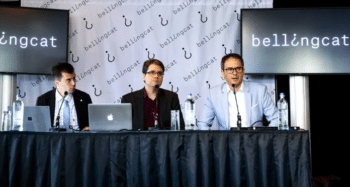
Higgins, center, addressing press conference in May 2018. (Photo: spectrum.ieee.org)
Eliot Higgins, Bellingcat’s founder, attacked Postol in a September 13, 2019, blog entitled: “Simulations, Craters and Lies: Postol’s Latest Attempt to Undermine the Last Vestiges of his Reputation.”
Higgins is a college drop-out who never set foot in the Middle East and, according to Postol, “has no scientific training, knows no science, and is not interested in learning any science.”
Before the Arab Spring, Higgins admitted that he “knew no more about weapons than the average Xbox owners; any knowledge he had came from Arnold Schwarzenegger and Rambo.”3
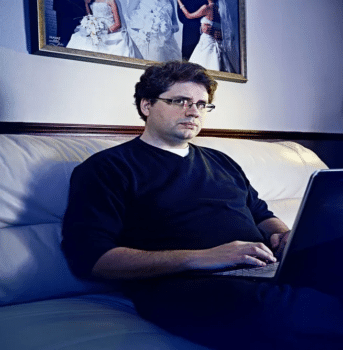
Eliot Higgins at home in England. Ironically, Higgins claimed to be an admirer of U.S. foreign policy critics Noam Chomsky and Naomi Klein—perhaps as part of a fake leftist veneer he has tried to cultivate. (Photo: newyorker.com)
In his blog, Higgins suggested that Postol was a Russian agent who had tried to pass the results of his research to the Russian delegation at the UN.
In fact, Postol and his team sent letters about their findings to all five permanent members of the UN Security Council—China, Russia, France, the United Kingdom and United States—and to the Acting President of the Security Council—Germany—because of their important implications.
According to Higgins, Postol’s study was flawed because the crater simulated in the computer models did not match the one in Khan Shaykhun or look like real-world craters formed by 122-mm artillery rockets.
However, Postol told CAM that the comparisons Higgins offered were flawed and he could not have replicated his team’s supercomputer calculation. The positions of the casings made clear the crater was caused by an artillery rocket, which was confirmed by military manuals.
Higgins’s blog was misleading, furthermore, because it analyzed photos that did not show the original crater and debris on the site at Khan Shaykhun, but ones that were taken after the scene had been tampered with. Also, it analyzed the wrong end of the rocket motor which had been turned upside down.
As such, Postol wrote that Higgins’s forensic analysis was “no more relevant to the truth than DNA evidence would be from the wrong blood samples at a murder trial.”4
Breach of Confidentiality and Conflict of Interest
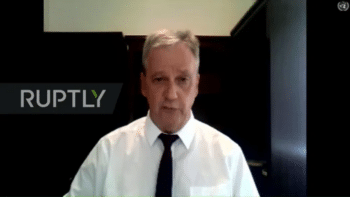
Ian Henderson (Photo: youtube.com)
According to Goong Chen, Science & Global Security’s editors were informed in October 2019 that the referee for Chen and Postol’s article had breached confidentiality by divulging the contents of his report to Higgins who told Postol about it during a public panel discussion in London.
Pavel Podvig’s own conflict of interest was apparent in his job as an adviser to the UN Secretary General.
Postol’s article provided science-based evidence that the OPCW has been falsifying reports to the UN Security Council related to chemical gas attacks in Syria—a charge corroborated by OPCW whistleblower Ian Henderson.
Slander by CFR Fellow
Gregory Koblentz, director of the biodefense graduate program at George Mason University’s Schor School of Public Policy and a CFR fellow, was one of the pseudo-experts quoted frequently in Bellingcat’s reports on Syria.
Koblentz obtained his Ph.D. in MIT’s security studies program in 2004 and took classes on nuclear weapons and missile defense from Postol and participated in WMD-related events that he organized.
Koblentz said that “the Ted Postol writing about Syria and chemical weapons is not the Ted Postol I knew back then [at MIT].”5
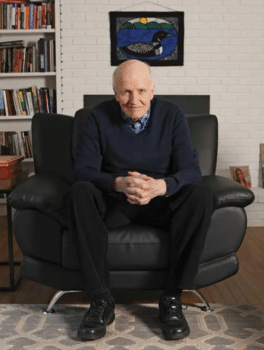
Frank von Hippel (Photo: paw.princeton.edu)
In an attempt to block publication of Postol’s Khan Shaykhun article, Koblentz wrote confidential letters to members of the editorial board and editors of Science & Global Security— which became known when Frank von Hippel, who helped found the journal in 1989, shared his letter with Postol.
Koblentz in the letter—sent on September 27, 2019—never refuted the science in Postol’s article, but rather replicated Higgins’s efforts to smear him. He wrote that he had spent the last two weeks trying to “educate the editors” of Science & Global Security and its editorial board about Postol’s “conspiratorial views about chemical weapon use in Syria,” which in his view had been “debunked by the open-source investigative site Bellingcat.”
Koblentz charged that, if Science & Global Security went ahead and published Postol’s piece, the journal’s “prestige and connection to Princeton University would be used by conspiracy theorists, right-wing extremists, Russian disinformation peddlers, and Assad apologists to whitewash the regime’s most heinous war crimes.”
Koblentz said that Postol’s analysis of chemical-weapons use in Syria exhibited a “pattern of unfounded, unscientific, and illogical assumptions about the world,” a “classic sign of conspiracy theory.”
This conspiracy theory was “quite popular among CW truthers, which include those who deny the Holocaust occurred or that Al Qaeda was responsible for 9/11, as well as among individuals and organizations who support the Syrian and Russian narratives that Syria has not gassed its own people.”

Alex Jones (Photo: npr.org)
According to Koblentz,
publishing Ted’s latest theory in Science & Global Security is akin to letting Andrew Wakefield publish an article about vaccines and autism in JAMA [Journal of the American Medical Association], Alex Jones to opine about media coverage of the mass shooting of Sandy Hook in the Columbia Journalism Review, or allowing a known climate change denialist to publish an article on global cooling in Science: these are all discredited conspiracy theorists who are best viewed as charlatans, despite any degrees they hold or honors they’ve received.6
Rejection and Dress-Down
After receiving Koblentz’s letter, he, Mian and Glaser consulted other scientists, like Princeton’s Robert H. Socolow, who encouraged them to withdraw Postol’s article from publication.
Mian and Glaser then met with Postol in a one-hour session in which Mian did all the talking. According to Postol, Mian was “very uppity in the meeting though showed signs he had not actually read his paper.” Postol said he felt at the meeting like he was “some South Asian servant being dressed down by a British imperialist in 1965.”
Resignation
Afterwards, Postol resigned from the editorial board of Science & Global Society, on which he had served for 30 years.
He stated that it was “anathema for him to be part of an organization that would intentionally or not seek to suppress or misrepresent valid scientific findings that have implications for international law and the future viability of the chemical weapons convention.”
In an exclusive interview with CAM, Postol said that the whole matter was very emotional for him because of his long friendship and association with the editors of Science & Global Security whom he mentored, helped get papers published and even helped get jobs. He feels that they betrayed him and the scientific community and made a grievous mistake by “failing to stand for their own scientific judgment.”
On October 25, 2019, Postol wrote to congratulate the three editors for allowing a “technically illiterate, third-class political scientist [Koblentz] to stop publication of a careful and comprehensively documented scientific analysis. Great job!”7
Academic Cowardice at George Mason University
In November 2019, Postol lodged a formal complaint of academic misconduct against Koblentz with Mark Rozell, Dean of the School of Government and Public Policy at George Mason University where Koblentz teaches.
Postol said that Professor Koblentz has been “misrepresenting himself as an expert on a matter where he demonstrably has no knowledge and he is using his false claims of knowledge to engage in slanderous allegations against me and my colleagues.”
In response to the letter, George Mason Provost S. David Wu (now president of Baruch College) carried out an investigation which determined that, while some of Koblentz’s statements were “undiplomatic,” he had not misrepresented his credentials and that accusations of slander should be handled in the courts.
The investigating committee concluded that “statements some may characterize as undiplomatic or disparaging nevertheless can be part of a discourse conducted within the bounds of academic freedom.”8
Postol responded by writing a letter to George Mason University Rector Tom Davis, a former Republican Congressman, in which he reiterated that Koblentz had no scientific expertise to challenge his findings and said that there was no discourse between him and Koblentz that could fall within the boundaries of academic freedom since the letters he sent were secret. Koblentz never sought to debate any questions about his work with him—rather, he posted information that was false to his colleagues without his knowledge.9
Postol further alleged that George Mason’s investigation was unprofessional and inadequate. Postol himself was never interviewed and never provided any information about who the panel members were and whether they possessed the requisite expertise to assess Postol’s research and whether it was professionally carried out.
Postol wrote:
I was excluded by a process that appears to have been designed from the beginning to exclude the addition of clarifying evidence or the raising of questions about the accuracy of statements that Koblentz may have made in his defense. In short, the procedure may or may not have been rigged, but they were certainly not constructed so as to get a balanced and comprehensive picture of the situation.10
Postol asked for Davis to rectify the problem, but he received no reply to his letter. When CAM tried to contact him, he was impossible to reach.
2013 Chemical Attacks in East Ghouta
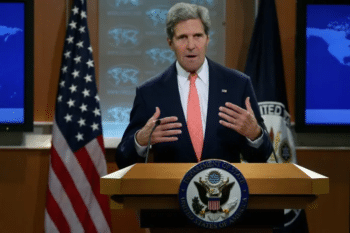
Secretary of State John Kerry gives dramatic performance at press conference on August 20, 2013, blaming Bashir al-Assad for sarin gas attacks in Eastern Ghouta seven days earlier. Kerry’s statements were false. (Photo: washingtonpost.com)
Postol wrote another important article debunking official government claims about alleged chemical-weapon attacks in Syria: in Eastern Ghouta, a suburb of Damascus, on August 13, 2013.
The latter attacks provided a pretext for threatened U.S. air strikes, which the Obama administration was poised to launch but held back on because of a lack of public support.
On August 20, 2013, Secretary of State John Kerry gave a dramatic press conference affirming the intelligence community’s conclusion that sarin chemical-weapon attacks had been carried out from “the heart of regime territory.”
Seymour Hersh quoted an intelligence officer at the time who suggested that the charade was a false-flag equivalent to the Gulf of Tonkin incident that resulted in the massive U.S. expansion of its war in South Vietnam.11
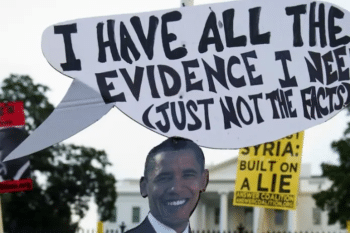
(Source: newrepublic.com)
The Obama administration used the attacks to justify Operation Timber Sycamore, a $1 billion program supplying arms to jihadist rebels seeking to overthrow Assad, and to push for air strikes which were called off because congress and the public made clear they did not want them.12
Postol’s article is entitled “The 2013 Nerve Agent Attack in Damascus, Syria: A Potentially Disastrous National Intelligence Failure.” As of yet, it has not been published. In one journal to which Postol submitted it, the editor waited five months to give him the peer review after he had received it—an unheard of time-lag.
Postol’s paper demonstrated that the artillery rocket motors which delivered the sarin gas in Eastern Ghouta were sufficiently powerful to propel each heavy sarin-filled steel barrel to a range of 2 to 2.5 km (about 1.5 miles).

Alleged rocket that delivered sarin gas. (Photo: blog.rootclaim.com)
Inspection of the map issued with the White House intelligence report showed that the attack could only have come from Syrian government-controlled areas if the rockets had a range of more than 10 km—which they did not.
Human Rights Watch, and The New York Times and other mainstream media outlets echoed the official U.S. government view that the attacks were carried out in Syrian government-controlled territory, which was impossible based on the laws of physics.
After Postol’s article was written, a UN inspection team corroborated many of its findings. At a press conference on December 16, 2013, Åke Sellström, the Head of Mission of the UN Mission to Investigate Allegations of the Use of Chemical Weapons in the Syrian Arab Republic, said that a 2-km range for the rockets that delivered the nerve agent was a “fair guess.”
Sellström’s conclusion was omitted from the OPCW report and UN leadership never corrected U.S., British and French assertions about the attacks that were false.
James Clapper, the U.S. Director of National Intelligence, additionally never corrected the false intelligence report that was used by the Obama administration to sell war.13
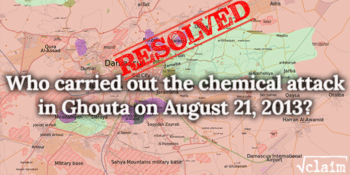
(Source: blog.rootclaim.com)
New Evidence
The video was ignored in the media at the time, and dismissed as a fake, though a June 2021 study by Rootclaim—a website founded by tech entrepreneur Saar Wilf—pointed to several landmarks visible in the video that matched with footage from satellite photos.
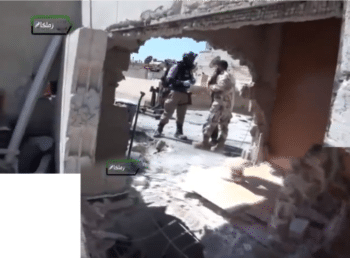
Targeted building with western wall destroyed. (Photo: blog.rootclaim.com)
The video combined with the satellite imagery helped the authors of the Rootclaim article, Michael Kobs and Adam Larson, to locate the launch site to a small field in rebel-held Qaboun with two rows of trees, low vegetation, and a paved platform.
Eliot Higgins suggested that the Syrian army launched the chemical rockets from an area of a military base south of the Air Force Intelligence Branch. However, the Rootclaim study shows it could not have been the source, as the angle was off and a rocket shot from there would have penetrated the northern wall of the target building, not the western wall, the actual one struck.
The authors also determined that the UN, The New York Times and Human Rights Watch, which all accused Assad of launching the strike, had calculated the wrong angle for the rocket.
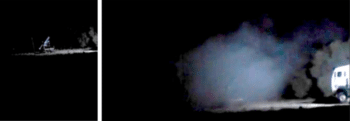
Launcher depicted near trees on left in insurgent video. (Photo: blog.rootclaim.com)
Three days after the Ghouta attack, as Syrian army forces entered the area, they were attacked by sarin, just 200 meters from the field where the Ghouta attack was thought to have been launched.
This attack was detailed in a UN report that Higgins, Koblentz and Bellingcat not surprisingly ignored.
Their agenda is clear in trying to poison the debate about Syria and defame dedicated scientists like Postol whose research casts important light on the deceptions underlying U.S. policy.
Notes:
- ↩ Residents who lived near the scene were also never exposed to the sarin gas when it would have been lethal.
- ↩ Letter to Goong Chen, Pavel Podvig, Zia Mian and Alex Glaser, December 27, 2019.
- ↩ Higgins’s employment history includes work as a data entry clerk at Barclays Bank, manager of invoices for a process management firm, helping asylum seekers find housing, and working on women’s undergarments.
- ↩ Theodore Postol, “Annotated and Highlighted Summary of Fraudulent Blog Referenced by Koblentz from George Mason University Hosted Web Site as Proof of Postol’s Incompetence and Dishonesty.” At a conference in London sponsored by the Center for Investigative Journalism, Postol debated Higgins who resorted to crude name-calling, smearing Postol as “an out of touch old man, an Assadist, and an apologist for mass murder.”
- ↩ Greg Koblentz to Frank N. von Hippel, “AAS—Scientists Clash Over Paper That Questions Syrian Government’s Role in Sarin Attack,” September 27, 2019, email copy of letter sent to the author by Theodore Postol.
- ↩ Greg Koblentz to Frank N. von Hippel, “AAS-Scientists Clash Over Paper That Questions Syrian Government’s Role in Sarin Attack,” September 27, 2019, email copy of letter sent to the author by Theodore Postol.
- ↩ Ted Postol to editors, October 15, 2019. Email supplied by Theodore Postol.
- ↩ S. David Wu, Provost and Executive Vice President to Theodore Postol, April 3, 2020.
- ↩ Theodore Postol, Letter to the Honorable Tom Davis, Rector, George Mason University, May 5, 2020. Letter provided to author by Theodore Postol.
- ↩ Ibid.
- ↩ In the Gulf of Tonkin incident, the Johnson administration lied about North Vietnam attacking two U.S. ships.
- ↩ See Jeremy Kuzmarov, Obama’s Unending Wars: Fronting the Foreign Policy of the Permanent Warfare State (Atlanta: Clarity Press, 2019), ch. 9.
- ↩ This was not the only instance of Clapper abetting misinformation or lying outright not only to the American public (as many politicians routinely do) but in testimony to Congress, which is a crime punishable by imprisonment.

